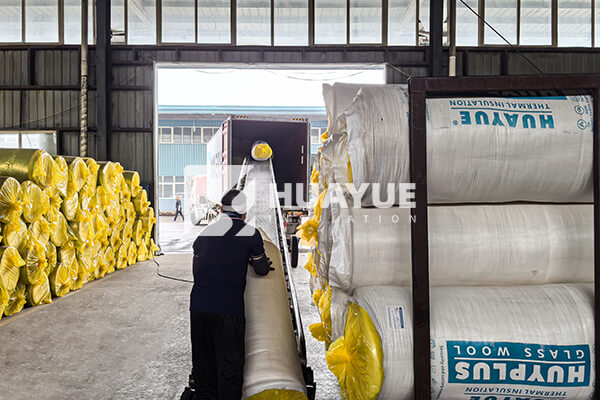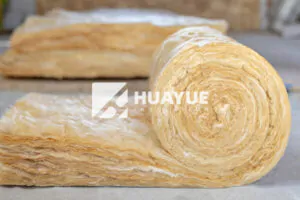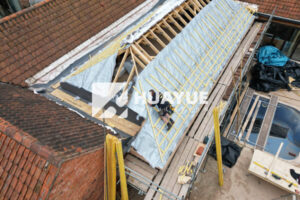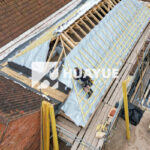Why Choose Rolled Insulation for Metal Buildings?
Rolled insulation often gets overlooked, yet it solves some of the biggest comfort and cost issues in metal buildings.
Rolled insulation is an efficient, flexible, and affordable solution for insulating metal buildings. It improves energy efficiency, helps control condensation, and reduces noise, making metal structures more comfortable and durable.

Too many metal building owners fight with temperature swings and condensation. If you want to make your building quiet, efficient, and durable, rolled fiberglass wool insulation does the job well. Let’s walk through why.
How Does Rolled Insulation Improve Energy Efficiency in Metal Buildings?
Energy costs add up fast in large metal buildings. Many owners see huge savings after insulating their spaces.
Metal buildings lose and gain heat very quickly. Rolled fiberglass insulation provides a thermal barrier, reducing heat transfer. As a result, it stabilizes building temperatures and lowers heating and cooling costs.

Here’s what matters most. Metal conducts heat and cold better than almost any common building material. If you do not insulate, your building gets hot fast in the sun and cold quickly in winter. Rolled insulation comes in large sheets or rolls, making it a good fit for the wide, open spaces in metal buildings. It unrolls right between the framing and metal panels. It stops heat from escaping in winter, and keeps cool air inside during the summer. Over time, less energy escapes, which means you spend less money on heating and cooling. Plus, it helps keep machinery, inventory, and people comfortable. Here’s what a simple comparison of insulated vs. uninsulated buildings looks like:
| Feature | No Insulation | With Rolled Insulation |
|---|---|---|
| Winter Heat Loss | Very High | Much Lower |
| Summer Heat Gain | Very High | Much Lower |
| Energy Costs | High | Lower |
| Comfort Level | Poor | Good |
What Role Does Rolled Insulation Play in Condensation Control?
Condensation can ruin metal buildings from the inside out. Rolled insulation is a simple, effective fix.
Rolled fiberglass insulation helps prevent condensation by maintaining a more stable interior temperature and blocking warm, moist air from meeting cold metal surfaces.
Condensation happens when humid, warm air hits the cold metal in your building, forming water droplets. These droplets run down walls and collect where you do not want them—on floors, equipment, and stored goods. Rolled insulation stops much of this from happening. It creates a barrier, which lowers the risk of water damage, mold, and rust. By wrapping the building envelope, it keeps the inside temperature more even. This simple measure extends the life of your building and keeps it much safer for long-term use.
| Risk/Problem | With No Insulation | With Rolled Insulation |
|---|---|---|
| Visible Drips | Frequent | Very Rare |
| Rust Formation | Common in Damp Seasons | Rare |
| Mold/Mildew Growth | High risk | Low risk |
Can Rolled Insulation Help with Noise Reduction in Metal Buildings?
Metal buildings can be very noisy, making work and conversation tough. Rolled insulation fixes this problem quickly.
Rolled fiberglass insulation absorbs sound, reducing echo and outside noise in metal buildings. It creates a quieter, more pleasant environment for workers or occupants.
Metal panels make noise. Rain, hail, machines, and even people talking bounce sound all around these buildings. Rolled insulation acts like a blanket. It soaks up sound waves and keeps echoes under control. This makes it easier to talk, work, or rest inside. Many factories, sports facilities, and warehouses now use rolled fiberglass insulation just for this reason. The results are clear: less ear strain, better focus, and a more pleasant building overall.
| Type of Noise | With No Insulation | With Rolled Insulation |
|---|---|---|
| Rain/Hail | Very Loud | Much Softer |
| Machines/Tools | Echoes Easily | Reduced Echo |
| Outside Traffic | Audible | Muted Significantly |

How Easy Is the Installation of Rolled Insulation in Metal Buildings?
Insulation jobs often look hard, but rolled insulation is designed to make things simpler.
Rolled insulation is easy to install between metal frames and panels. It comes in large, flexible sheets and needs only basic tools and skills to fit correctly.
I have seen maintenance teams complete entire building insulation projects with only a few simple tools and a couple of days. The insulation rolls are light and flexible. Put them into the framing before putting the metal panels in place. The result is fast, neat, and effective. This is one reason so many contractors and owners like using rolled fiberglass in metal buildings. Even if you need to retrofit, cutting it to size and fitting it into wall or roof cavities is simple. This saves on labor costs and reduces installation errors.
| Step | Details |
|---|---|
| Position the Rolls | Fit between framing |
| Attach (if required) | Secure with fasteners |
| Trim to Fit | Use utility knife |
| Finish with Panels | Cover and seal |
Conclusion
Rolled fiberglass wool insulation solves real problems in metal buildings, from energy loss to condensation to noise, making it an efficient and cost-effective choice for owners and builders.
You may also be interested in:
Ready to Get Started?
Get in touch with our experts for personalized solutions tailored to your needs.
Get Free QuoteLatest Articles
Let's Work Together
Ready to take your business to the next level? Get in touch with our team of experts and let's discuss how we can help you achieve your goals.
Get Free Solutions







